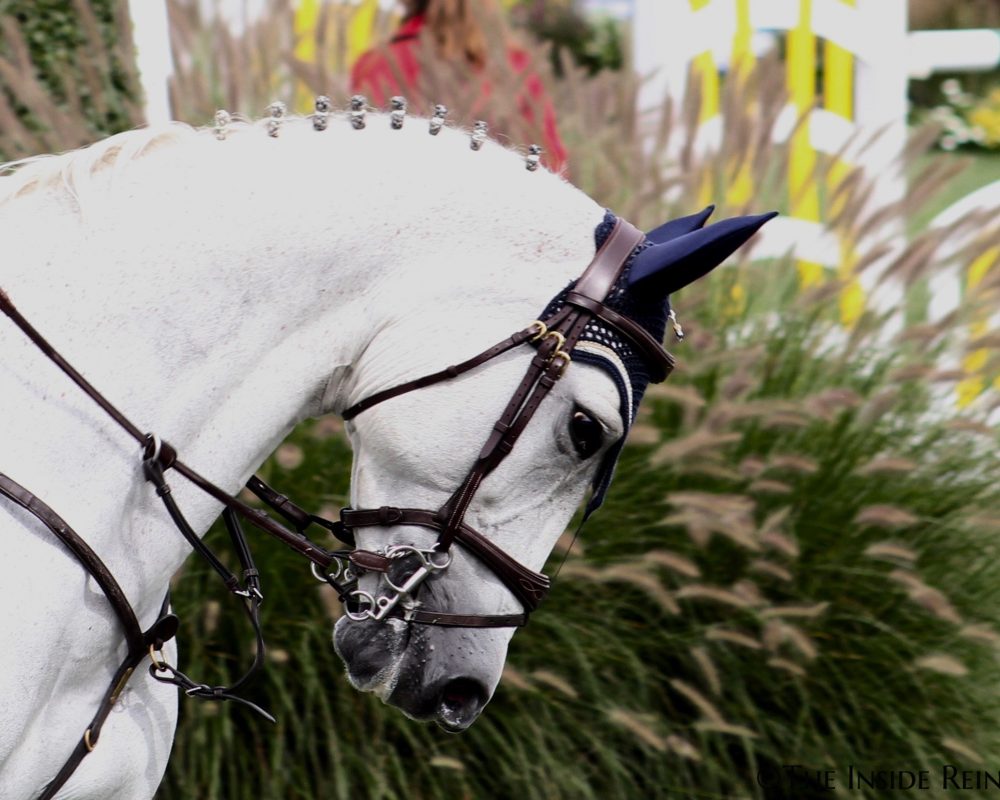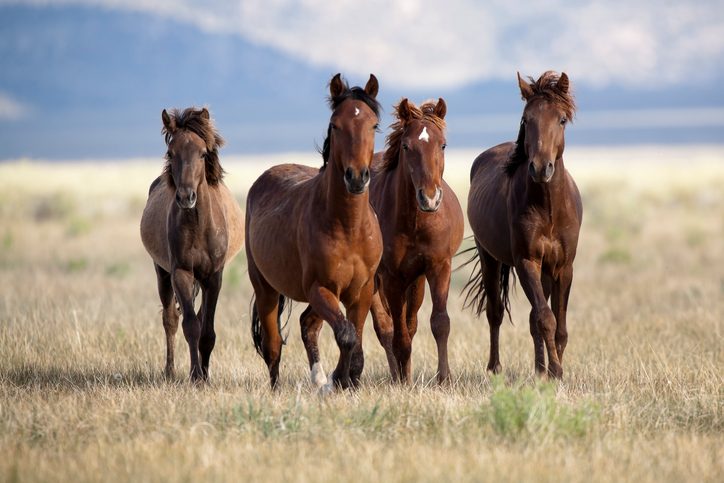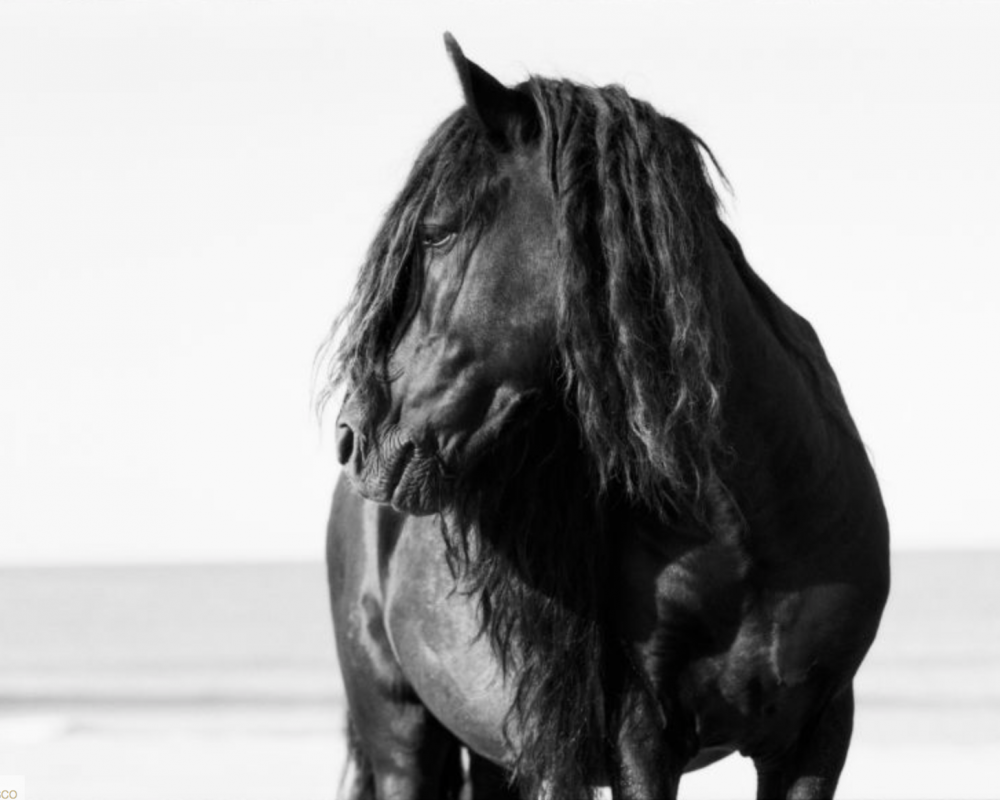This week we’re featuring two documentary films from Horsefly Films Rare Equine Trust: TARPAN: Repainting an Ancient Picture and Of Gods and Kings: The Skyros Horse. These beautifully filmed documentaries tell the story of ancient horses fighting for survival in a modern world.
TARPAN: Repainting an Ancient Picture takes viewers to Europe where the ancient Tarpan roamed for millennia until the last pure Tarpan, in an effort to avoid capture, jumped to her death in 1918. The film highlights the challenges faced by the ancient breed and the effort to re-create a modern day Tarpan. The film also explores re-wilding efforts in Eastern Europe, of which the Tarpan is a vital element, and showcases the herds adaptability to new environments and predators. TARPAN won Best Short Documentary at the Equus Film Festival.
Of Gods and Kings takes us to Skyros, a picturesque Greek Island where the diminutive Skyros horse has an ancient and storied past. As their agricultural use decreases, and wind farms threaten their grazing land, these horses are fighting for survival. Fortunately for the Skyros horse, multiple organizations are actively propagating the breed, though not without controversy. Of Gods and Kings won Best Historical Presentation at the Equus Film Festival in New York.
Both films are available on Vimeo for $1.99. Click to watch Tarpan and Of Gods and Kings. DVD’s may also be purchased from the Rare Equine Trust Website.
Here’s our interview with filmmakers Sophie dia Pegrum and Jen Miller:
What sparked your interest in horses and filmmaking?
JEN: I grew up with Arabian horses. Some of my first memories were of riding on the front of my Mom’s saddle and then for my 8th birthday I got a very naughty Shetland pony named Gingersnap who bucked me off. I thought she was beautiful anyway. I have been a writer since childhood and also had an intense fascination with film. It has always seemed like a magic medium— the audience beside you, the reels unspooling in the dark— with endless storytelling possibilities.
SOPHIE: As a child I spent a lot of time with my siblings tearing around the English countryside dreaming up adventures. Though I didn’t have horses I would be the one to lag behind when we passed a field where a magnificent horse lived. I was mesmerized by horses then, and still am. As for filmmaking, early on I was inspired by the BBC’s Natural world films, as well as epics from directors like David Lean and Stanley Kubrick, but it wasn’t until I met a maverick group of low-budget filmmakers in Venice, California that I finally threw myself into the indie film world.
J&S: For both of us our intense passion for horses and film simmered alongside our professional careers in the traditional Hollywood framework. Eventually all our professional experience and creativity evolved into Horsefly Films. Our love for horses and filmmaking was mutual and at a certain point we decided to put the two together. We felt the business of horses needed good filmmaking in the same way that it already had incredible photography. What is more cinematic than a horse? We successfully filled that gap. Giving back to horses led to the Rare Equine Trust, where we make documentaries about rare horses and vanishing equine cultures. A labor of love.
Where did you first learn of the ancient Tarpan & Skyros horses and what inspired you to make a film about them?
There are over 600 breeds of horses around the world that are endangered and in danger of going extinct. Most are unknown. We don’t like to plow the same ground someone else has already been over, so to us these sounded like the perfect stories to tell. From deep in the bowels of the internet came the phrase “The Skyrian Horse of Skyros is all but unknown”. Well that’s the ultimate bait for filmmakers like us. Let’s go seek them out, let’s tell their story! We are both archeologists and anthropologists with cameras. After beginning the series with these incredible little endangered horses, the unsung equine partner of Olympic Gods and Alexander the Great, it brought the spectre of extinction front and center for us. They are just so on the brink. We asked ourselves the questions: What actually happens when a horse goes extinct? What if we fail the horse on this level? There is no return, right? Through our research into these questions we learned about the re-wilding of the Tarpan, a technically-extinct equine. Again that immediately sparked our interest and we were off and running. The result is the second film TARPAN: Repainting An Ancient Picture, which we shot in Bulgaria.
The Tarpan ponies are being used to “re-wild” abandoned land in Bulgaria and elsewhere, whereas the Skyros ponies are at risk of losing their land to wind mill farms and other development. Still, some people want to maintain the breed only on native lands. What are your thoughts on relocating herds?
As we say in the films, there is a very delicate balance to be found here. In the case of the Skyrian Horse, it’s clear that the goal is that the island of Skyros maintains itself as the source and benefits greatly if the horse is exported around the world— both as a form of awareness and PR, but also to maintain strong genetic diversity through these outpost herds. Just in the last three weeks two wonderful geldings from Skyros who are in the film were exported to Belgium as riding horses for children. Skyros is incredibly remote. They are doing a Herculean job at preserving these horses against staggering odds, but they definitely need outside interest to continue that. Having these two breed ambassadors go to central Europe and do a job which they excel at can only help their cause.
There are many dimensions to this question though. We cannot overlook that there are also very strong and valid cultural pressures at work here and our film touches on this. The first herd that was exported to Scotland was initially seen as being tantamount to stolen, and left Skyrian people feeling very conflicted. When one considers the Elgin marbles, cultural treasures that were stolen from Greece, one can understand their cautious approach.
With the Tarpan, it’s a different story. The Polish Konnik or modern Tarpan is indeed native to Poland and the Bialowieza forest, but they have been part of huge relocation groups for many decades— in the Netherlands and in Britain, all as an integral part of re-wilding wetlands and other sensitive wildlife areas. Until now they have thrived in Poland in their protected primeval forest, but with Poland’s new extreme right government starting logging in this national treasure, it now seems critical that these other herds exist in other countries besides Poland.
As the film points out, the last pure Tarpan died in 1918 and the current version of the breed has been carefully bred to replicate the ancient horse. Did you run into people with ethical questions about the attempt to bring back an extinct species?
Surprisingly no. Or perhaps we should say unsurprisingly, since the modern Tarpan that exists in Poland— the Polish Konnik— was not bred to replicate the ancient Tarpan but has existed all along in relative isolation (in the Bialowieza Forest) as it’s genetic legacy. This horse is the ancient Tarpan with a slight smattering of modern equine genes from that blending of wild and feral horses that always existed in the ecosystem there. Ask anyone in Poland about the modern Tarpan or Konnik and they found our asking any questions very strange—they love them and just accept them as part of the fauna of Poland that has always existed there. Where the ethics come in are in these fringe groups that we discuss in the film that did try and “recreate” ancient Tarpan through sometimes dubious means or for dubious reasons— for example the Nazis and their mania for resurrecting ancient, extinct animals.
People familiar with the Skyros horse talk about its friendliness. That, combined with their small size, makes them ideal for children and therapy programs. Do you think giving wild horses a purpose will help prolong their existence or do you see them simply becoming another domestic horse, losing their primitive nature?
In an ideal world we would have the foresight to carve out swathes of land for our wild horses to “re-inherit”. As we discuss in our film about the re-wilding of the modern “Tarpan”, we realize that even this simple idea is fraught with challenges. The re-wilding of herbivores also requires a complete understanding of the entire ecosystem to which they belonged before man encroached. Horses should not need a “purpose” in order to thrive, but as we know, their lives and histories have been entangled with ours for a very long time.
We must understand the implications of conserving an animal and its place in the ecosystem and hope these films will promote and enhance the careful and considered discussion of those subjects.
Certainly by finding them a way to participate in our culture going forward will prolong their existence, even though that may be symbolic. Organizations that understand breeding will need to continue to recognize that breeding the wildness out of all domestic horses doesn’t do us, or the horses any favors. The best aspects of wildness mean that nature chooses the strongest and most resilient, and certainly doesn’t care about color or the conformation to continually altering standards that we humans arbitrarily impose. Naturally, Skyrian horses adapted to both the mountain, and working life. We are hopeful that with the careful attention of dedicated organizations, they will return to healthy numbers, and also become great companions.
At the conclusion of the Skyros film, the discovery of ancient bones, possibly that of the Skyros horse from the Bronze Age, was mentioned. Are there any updates to that story?
As far as we know, there is not any additional information regarding the bones discovered on Skyros. Unfortunately Greece has been in the depths of a financial crisis, a refugee crisis and money for culture and further research simply has not been available.
Organizations like the Skyrian Horse Society actively work to spread awareness about the breed, hoping public interest will spark a desire to preserve the horse. Is this effective? What is the best way to ensure the preservation of wild horses?
It’s possible that our films raise more questions than they answer, and as documentary filmmakers, that is indeed our role. Sparking discussion and awareness is the first step in the right direction. Organizations like the Skyrian Horse Society and the Katserelias Simpson Stud face incredible financial challenges and it is the dedicated and tireless work of a few individuals which has kept these horses from going completely extinct. Their uphill battle is not only about spreading awareness, but dealing with Greece’s stringent equine export laws, which though remain to “protect” the horse, simultaneously prevent breeding horses leaving the country. This has slowed progress, certainly. “Rewilding Europe” is doing incredible work and we hope that their model can be shared further afield as it certainly seems to be proving effective in the preservation of other wild breeds including horses.
Ultimately, the preservation of rare equine breeds and equine cultures shouldn’t be, and can’t be in splendid isolation somewhere separate from our human narrative. They are an integral part of who we are and who we become. It will be up to the young people of the future to understand their relevance and continue this important work.
Horsefly Films Rare Equine Trust produces beautiful work. Talk a bit about the organization; it’s origins, goals, and what’s in the pipeline.
First and foremost we are both lifelong storytellers and filmmakers, with a passion for horses. We have always been fascinated by the equine connection to mankind and as documentary filmmakers, we felt that the horse had not had the voice it deserved. We always say that the history of man IS the history of the horse. It’s our guiding principle and colors everything we do at the Horsefly Films Rare Equine Trust. We are fascinated by history, by unique and often overlooked stories that desperately need telling and our lens on history has this unique equi-centric focus.
We have two distinct sides of our business—on one hand we have equine clients around the world such as the State Studs of Poland and illustrious breeders elsewhere that are at the top of their game and hire us to create cinematic promotional films. These fantastic gigs take us places where we have incredible equine experiences and come face-to-face with subject matter for the other side of our business—that of making documentary films that are near and dear to our hearts.
One hundred years ago, the horse was central to our survival. Now, we are central to the survival of the horse. Perhaps, in the future our societies may have to re-develop that unique bond. Our goal is to continue documenting the stories of rare horses and equine cultures at this pivotal part in human history.
We are in the process of releasing the film “Talking to the Air: The Horses of the Last Forbidden Kingdom” which was shot in the Himalaya and we have two more films in the pipeline. We shot one in Kyrgyzstan, a place where the young maverick horse riders of today represent their centuries-old culture, and where the horse is considered “the wings of man”. We are also in production on a film about the White Horses of Camarillo. These exceedingly rare and genetically unique horses represent the story of the Camarillo family and indeed, the quintessential story of California, from our roots in Spain and Mexico to our ranching traditions and the mythology of our collective dreams.
Follow Jen Miller and Sophie dia Pegrum on Twitter and Horsefly Films on Facebook for updates on their latest projects.



Leave a Reply